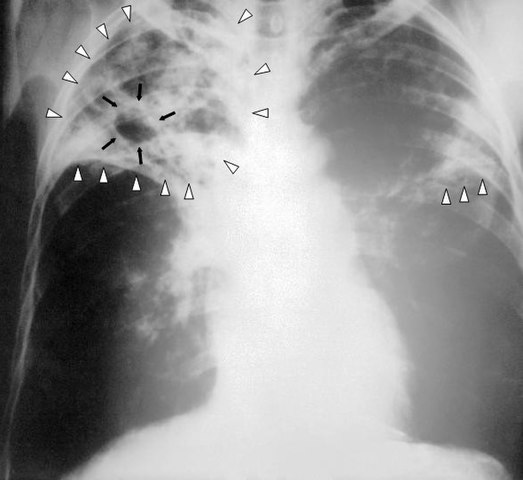Tuberculosis (TB) is a bacterial infection caused by Mycobacterium tuberculosis. It primarily affects the lungs but can also affect other parts of the body. TB is a contagious disease that spreads through the air when an infected person coughs or sneezes. Here are the causes, symptoms, and effective treatment of TB:
Causes:
- Mycobacterium tuberculosis: TB is caused by Mycobacterium tuberculosis, a bacterium that can be transmitted through the air when an infected person with active TB coughs or sneezes. It can also be spread when people inhale tiny respiratory droplets containing the bacteria.

- Latent TB vs. Active TB: Not everyone exposed to the TB bacterium becomes sick. Some people develop latent TB, where the bacteria are present but not causing symptoms. However, in some cases, the infection can become active, leading to the development of the disease.
Symptoms:
Active TB Symptoms:
- Persistent cough that lasts for several weeks.
- Coughing up blood or sputum.
- Chest pain.
- Fatigue and weakness.
- Weight loss.
- Loss of appetite.
- Fever and night sweats.
- Shortness of breath.
Latent TB Symptoms:
- Latent TB typically has no symptoms. It is detected through a TB skin test or blood test.
Diagnosis:
- Tuberculin Skin Test (TST): This test involves injecting a small amount of TB protein under the skin and checking for a reaction.
- Interferon-Gamma Release Assays (IGRAs): Blood tests like the QuantiFERON-TB Gold test can detect the presence of TB infection.
- Chest X-ray: X-rays can reveal abnormalities in the lungs.
- Sputum Culture: A sample of sputum (mucus coughed up from the lungs) is cultured to identify the TB bacteria.
Effective Treatment:
- Drug Therapy: TB is treatable with antibiotics. The most common treatment is a combination of several antibiotics taken over a course of six months or longer. The antibiotics typically include isoniazid, rifampin, ethambutol, and pyrazinamide.
- Directly Observed Therapy (DOT): Patients are often required to take their medications under direct observation to ensure compliance with the treatment regimen.
- Drug Resistance: Some strains of TB have developed resistance to common antibiotics, leading to multidrug-resistant TB (MDR-TB) and extensively drug-resistant TB (XDR-TB). In these cases, more specialized and longer treatments are required.
- Isolation: Patients with active TB may be isolated to prevent the spread of the disease until they are no longer infectious.
- Vaccination: The Bacillus Calmette-Guérin (BCG) vaccine is used in some countries to prevent TB, although its efficacy varies.
- Contact Tracing: Individuals who have been in close contact with someone with active TB should be screened and, if necessary, treated to prevent the spread of the disease.
Early detection and prompt, consistent treatment are crucial for curing TB and preventing its spread. TB is a serious public health concern, but with effective treatment and preventive measures, it can be managed and controlled. If you suspect you have TB or have been exposed to it, seek medical attention promptly.











